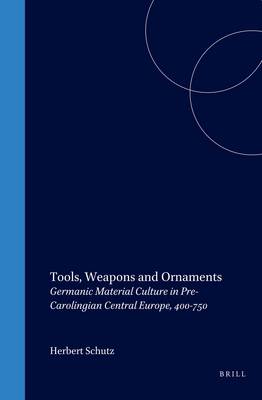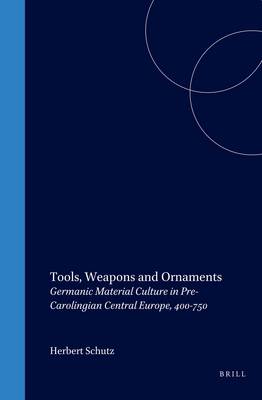
- Afhalen na 1 uur in een winkel met voorraad
- Gratis thuislevering in België vanaf € 30
- Ruim aanbod met 7 miljoen producten
- Afhalen na 1 uur in een winkel met voorraad
- Gratis thuislevering in België vanaf € 30
- Ruim aanbod met 7 miljoen producten
Zoeken
Tools, Weapons and Ornaments
Germanic Material Culture in Pre-Carolingian Central Europe, 400-750
Herbert Schutz
€ 183,80
+ 367 punten
Omschrijving
This illustrated book continues themes in Central European cultural history treated elsewhere with the intention of presenting an interdisciplinary study of early medieval socio-cultural developments.
A continuation of the preceding books, this volume examines the archeological evidence of the groups who settled Central Europe. It aims to amplify the information recorded during the late Roman Empire about societies, social dynamics and ethnological contexts by examining their material culture. The language of significant objects complements the literature of significant texts.
The three parts of the book inform of the historical and archeological evidence; elaborate the socio-cultural conclusions provided by archeology; examine the system of values as reflected in the forms of artistic expression. The study of objects helps clarify the contours of the Germanic populations of pre-Carolingian Central Europe.
A continuation of the preceding books, this volume examines the archeological evidence of the groups who settled Central Europe. It aims to amplify the information recorded during the late Roman Empire about societies, social dynamics and ethnological contexts by examining their material culture. The language of significant objects complements the literature of significant texts.
The three parts of the book inform of the historical and archeological evidence; elaborate the socio-cultural conclusions provided by archeology; examine the system of values as reflected in the forms of artistic expression. The study of objects helps clarify the contours of the Germanic populations of pre-Carolingian Central Europe.
Specificaties
Betrokkenen
- Auteur(s):
- Uitgeverij:
Inhoud
- Aantal bladzijden:
- 440
- Taal:
- Engels
- Reeks:
- Reeksnummer:
- nr. 1
Eigenschappen
- Productcode (EAN):
- 9789004122987
- Verschijningsdatum:
- 15/10/2001
- Uitvoering:
- Hardcover
- Formaat:
- Genaaid
- Afmetingen:
- 167 mm x 245 mm
- Gewicht:
- 961 g

Alleen bij Standaard Boekhandel
+ 367 punten op je klantenkaart van Standaard Boekhandel
Beoordelingen
We publiceren alleen reviews die voldoen aan de voorwaarden voor reviews. Bekijk onze voorwaarden voor reviews.











